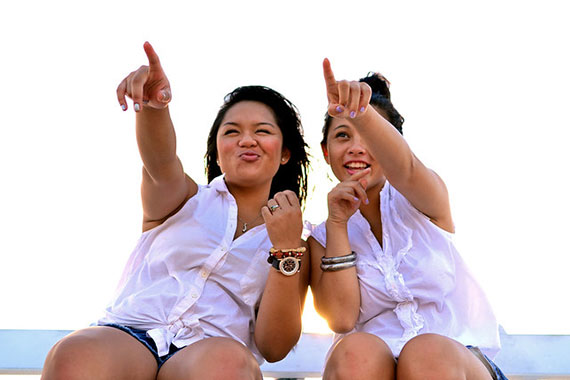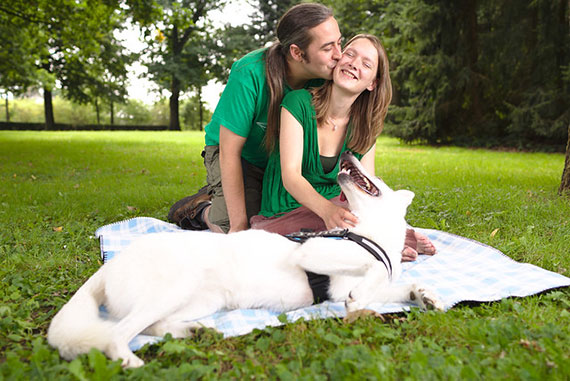With careful use of flash, you can make your photos look natural—as though no artificial lighting had been used. Certain flash photography techniques can enhance the photo by further reducing contrast while looking very natural.

“Ready… Set… Sunset” captured by Maximilian Mann
It’s a dream of all photographers to look for the balance in lighting whenever they photograph a subject, but most of the time the quality of available light isn’t perfect. I will share my experience in making use of flash wisely to enhance my photos.
Before we get started, let me clarify a few things with regards to my flash photography techniques.
- Let me define the term flash in this article. It is what some people call a “speedlight,” which is the add on flash mounted on the camera hot-shoe type and not either the studio strobe type of flash or the pop-up flash build into the camera.
- The flash photography techniques I’m writing about in this article are mostly applicable for “in the field” or “on the move” photography and not studio photography.
- I’m a user of a Nikon DSLR and Speedlights. The examples used here are not a standard recipe, as each camera system may have a slightly different reading and require some adjustments.
Ambient Light Plus Flash Photography
I use flash most of the time, but using flash does not mean you will spoil the ambient light, thus making the photo looking unnatural. Why just use available light alone if your photograph turns out to be horrible? I will show you that by understanding some essential techniques and mixing ambient light with flash you can make a better image.
By using the flash, I’m able to highlight the shadow areas and avoid shadows under the subject’s eyebrows, thus making it a better photo than it would have been without flash. But this does not mean that the image will turn up flat. Make sure you get your reading right.

Photo by A&A Photography; ISO 100, f/2.8, 1/200-second exposure.
Let’s try two examples.
1. Say you’re taking photos of a couple in park under shade with a sunlit background:
- Shoot in manual mode, because you need to be in control of your exposure metering for accuracy and consistency.
- Meter for the ambient light, get your exposure right, turn off your flash, and take a test shot. With the correct exposure you will get a perfect natural surroundings but the wedding couple will be little underexposed or have some shadows around their faces.
- Now turn on your flash and adjust your flash to TTL-BL mode which balances flash automatically with ambient light (as I’m using Nikon). Adjust your flash compensation. Start from 0 EV compensation and slowly go up until plus 1.7 EV. How much is enough? There is no one correct answer to that as it depends how much flash you need to use as a fill in flash. In this example you surely need a stronger fill-flash to match the sunlit background.
2. Say you are taking photos of the bride outdoors:
- Again always shoot in manual mode.
- Meter correctly for the available light.
- Adjust your flash to TTL-BL mode. As for outdoors, I usually start from -1.3 EV because Nikon Speedlights on TTL-BL mode balance flash automatically with ambient light and I will always shoot with flash firing straight on. The real idea is to use the flash as a fill-light only and to lift the shadows.

Photo by Dennis van Zuijlekom; ISO 50, f/2.8, 1/200-second exposure.
The above two examples tell you that by just adding flash with the correct exposure set by reading the ambient light. Together with the right amount of flash value, you will have a perfect and balance natural looking image. Who says flash will look unnatural and spoil the ambient light?
About the Author
This article was written by Affendy Ahmad.
Like This Article?
Don't Miss The Next One!
Join over 100,000 photographers of all experience levels who receive our free photography tips and articles to stay current:





As a beginner with a Nikon D3300, I am interested and rather fascinated with the concept of the BALANCING of Ambient light & Off Camera Flash for Portrait Photography. Although I am having difficulty in totally understanding the exact procedures or steps I will need to take to accomplish and create those stunning Portraits I have seen online. Help!
Thank you! I have a flash and I seldomly use it. I can’t wait to play using your tutorial!
Also very helpful article for me. I often photograph my friends and such advices help me to please them more with their photos. Thanks.
I am loving this tutorial. i’ve always been wondering how to use flash for the ambient pictures. Some pictures look like they have a green-bluish tint to them. Now that I want to learn how to do as well
This is a very helpful article. I rarely see articles on how to use an on-camera speedlight, and this helped a lot. Your photos are beautiful. Thank you so much.